How do you plan to celebrate the Fourth of July? A backyard barbecue? Watching fireworks? What about gathering 10,000 or more of your closest friends to form a large patriotic symbol and then photographing it? If you chose the last one, you'll be following the tradition of Chicago-area photographers Arthur Mole and John Thomas.
Mole and Thomas became famous for what Mole called his "living photographs." During World War I, the U.S. military commissioned them to orchestrate and photograph troops at bases around the country to boost morale. The photos also display an impressive feat of photography and staging.
Mole would trace the emblem on a glass plate over his camera lens. Then, from atop an 80-foot tower, he would look through the lens and direct staff to make outlines on the ground. This setup would take about a week. On the day of the shoot, Mole would spend hours directing the troops through a megaphone. Taking advantage of perspective, Mole would position more people away from the camera and fewer closer to it. One shocking example of this is his Statue of Liberty photo, where the first line of the base of the statue has only 17 people in it, while the torch, a half mile away, has 12,000 people in it.
The Human American Flag created at Great Lakes Naval Training Center north of Chicago was celebrated and re-created at Soldier Field 50 years later in 1967 with 9,600 sailors taking part. In attendance was Dr. Edwin C. Reynolds, one of the members of the original 1917 flag. According to a Chicago Tribune article from July 8, 1967, Dr. Reynolds recalled, "It was a cold day, and I dressed in my white summer uniform and stood in the third white stripe on the bottom of the flag."
2017 marks a hundred years since the United States entered World War I. You can view Thomas and Mole's work, along with other items related to the history of WWI, in the World War I Collection in CPL's Special Collections.
What image would you like to see created by thousands of people?

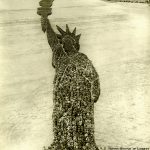

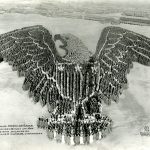
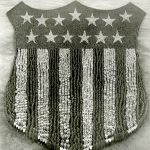
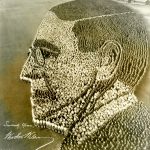
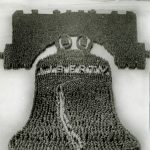

Add a comment to: Strike a Patriotic Pose for July Fourth